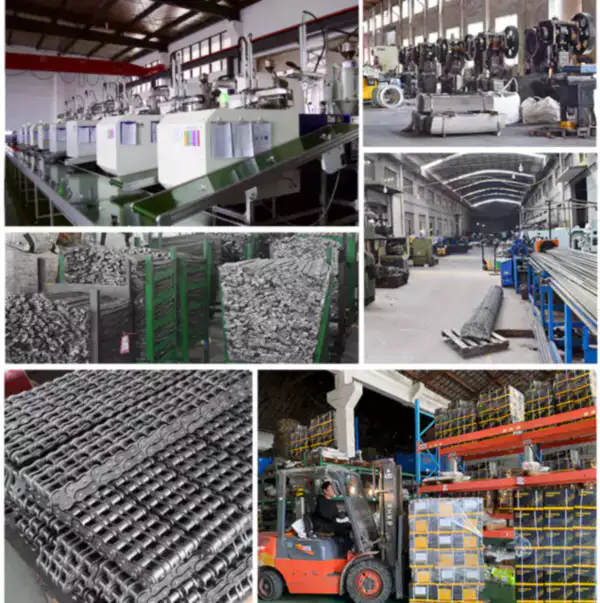Gripper chains are an essential component of many industrial and agricultural machines, and they are used to move heavy loads, convey products, and perform other critical tasks. However, when operating in cold environments, these chains can face several challenges that can affect their performance and longevity. In this article, we will discuss the best practices for ensuring smooth operation of gripper chains in cold environments, including maintenance, lubrication, and material selection.
Maintenance Tips
Maintenance is crucial for extending the life of gripper chains and ensuring smooth operation, especially in cold environments. Here are some maintenance tips:
- Regularly inspect the chains for wear, damage, and corrosion
- Keep the chains clean and dry to prevent rust and other contaminants from building up
- Adjust the tension of the chains to ensure proper alignment and prevent excessive wear
- Replace worn or damaged chains and components promptly
- Store the chains properly when not in use to prevent corrosion and deformation

Lubrication Techniques
Lubrication is another critical factor that can affect the performance and longevity of gripper chains in cold environments. Here are some lubrication techniques:
- Choose a lubricant that can withstand low temperatures and resist water and other contaminants
- Apply the lubricant evenly and generously to all parts of the chains, including the pins, bushings, and rollers
- Use a lubrication system that can deliver the lubricant precisely and automatically to the chains
- Regularly monitor the lubrication system and adjust the lubricant flow and pressure as needed
- Clean and reapply the lubricant periodically to prevent build-up and contamination

Material Selection
The material of the gripper chains can also affect their performance and durability in cold environments. Here are some material selection tips:
- Choose a material that can withstand low temperatures without becoming brittle or losing strength
- Consider using coatings or surface treatments that can enhance the corrosion resistance of the chains
- Opt for a material that can resist wear, abrasion, and impact damage from heavy loads and harsh conditions
- Ensure that the material meets the relevant industry standards and regulations for safety and performance
- Consult with a material expert or manufacturer to select the most suitable material for your specific application

| Parameter | Recommendation |
|---|---|
| Chain Material | Choose a material that can withstand low temperatures, resist wear and corrosion, and meet relevant standards and regulations. |
| Chain Size | Select a size that matches your machine's requirements and can handle the expected load and speed. |
| Chain Tension | Adjust the tension of the chains to ensure proper alignment and prevent excessive wear and stretch. |
| Lubrication | Use a lubricant that can withstand low temperatures, resist water and contaminants, and apply it evenly and generously to all parts of the chains. |
| Maintenance | Regularly inspect, clean, and replace the chains and components, and store them properly when not in use. |
Sprockets for Gripper Chains
Sprockets are an essential complement to gripper chains, as they provide the teeth or cogs that engage with the chain links and transmit power and motion to the load. Choosing the right sprockets for your gripper chains can improve their performance, reduce wear and tear, and enhance the overall efficiency and safety of your machine.
At Everpower, we offer a wide range of sprockets that are compatible with various types and sizes of gripper chains. Our sprockets are made of high-quality materials, such as carbon steel, stainless steel, and plastic, and can withstand low temperatures, corrosion, and impact. We also provide custom sprockets that can meet your unique specifications and requirements.

Our Advantages
Choosing Everpower as your gripper chain and sprocket supplier can offer you several advantages:
- We are a reliable and experienced manufacturer with over 20 years of industrial chain production history
- We have a wide range of gripper chains and sprockets that can meet various applications and industries
- We use advanced production equipment and technology to ensure consistent quality and performance
- We offer competitive prices and customized solutions to meet your budget and needs
- We provide excellent customer service and technical support to help you optimize your machine's performance and efficiency

Q&A
Q: What is the typical temperature range for cold environments?
A: Cold environments can vary widely depending on the application and location, but they usually refer to temperatures below 0¡ãC or 32¡ãF.
Q: How often should I lubricate my gripper chains?
A: The frequency of lubrication depends on several factors, such as the operating temperature, load, speed, and environment. However, as a general rule, you should lubricate your gripper chains at least once a week or more frequently if the conditions are severe or challenging.
Q: Can I use any sprocket with any gripper chain?
A: No, you should choose the sprocket that matches your gripper chain's pitch, width, and tooth profile. Using an incompatible sprocket can cause premature wear, noise, and other issues.
Edited by Zqq.
